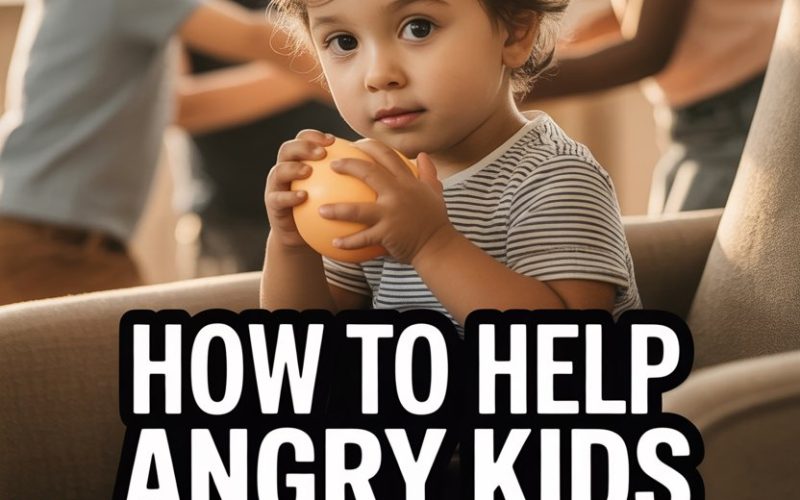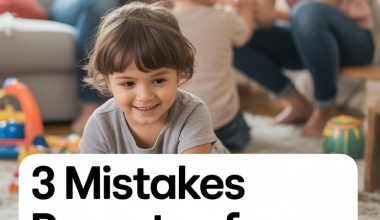Ever wondered if your child is auditioning for a role in an erupting volcano documentary? You’re not alone.
Big feelings (and the big reactions that come with them) are a package deal with childhood.
For busy parents, the challenge is less about eliminating anger and more about helping kids cool down before your living room transforms into a full-blown meltdown zone.
The good news? You can help your child learn to calm themselves without enrolling in a weekend meditation retreat or taking a course in child psychology.
Here’s how to help your child regulate those fiery feelings—quickly, compassionately, and yes, on a schedule that might include a Zoom meeting and a load of laundry.
Stay Calm, Even If You’re Faking It
When your child’s face turns red and their little fists clench, your own pulse is probably racing. (If you’ve ever responded to a tantrum with a tantrum of your own, welcome to the club. Meetings are on Thursdays.)
The problem? Kids rely on adult cues to gauge how safe they are.
Dr. Mona Delahooke, a clinical psychologist and author, often reminds parents that calm is contagious. If your child sees you keeping your composure, they’re more likely to calm down themselves.
Take a few slow breaths, unclench your jaw, and try your best to speak in a steady voice—even if inside you’re mentally composing an email to the universe asking for a refund.
Name What’s Happening
It’s tempting to launch into “You need to calm down!” (a phrase that, as Taylor Swift could tell you, works for nobody). Instead, put words to the storm your child is experiencing. “Wow, you’re really angry because the iPad time ended.”
This is called emotion labeling, and it’s not just touchy-feely stuff—research from Yale’s Center for Emotional Intelligence shows that labeling emotions can actually help kids (and adults!) move through them more quickly.
You’re not agreeing with everything your child is feeling or doing; you’re simply showing them that feelings are okay to notice, talk about, and manage.
Breathe Like You’re Blowing Bubbles
Asking a fuming seven-year-old to “take a deep breath” might land as well as a brussels sprout in a chocolate cake.
The trick? Make it playful. “Let’s blow up a pretend balloon!” or “Can you blow out all the candles on your birthday cake?”
Children love imagery, and turning deep breathing into a game helps their bodies relax without the pressure of “calm down now.”
A favorite among many teachers is the “Hot Cocoa Breaths” technique: Pretend you’re holding a mug, breathe in the smell (“Ahhh!”), then blow to cool it (“Whooo!”).
This tactic gives kids something concrete to focus on, helping to shift them out of fight-or-flight mode.
Get Moving, Even Just a Little
Anger triggers a flood of stress hormones—and those hormones want action. Sitting still during a meltdown is a bit like trying to put a lid on a pot of boiling water.
Try inviting your child to jump, stomp, march, or stretch. “Let’s stomp like dinosaurs!” or “Can you run to the door and back?” Physical movement burns off adrenaline and gives angry energy somewhere to go besides your freshly cleaned carpet.
Research from Harvard’s Center on the Developing Child supports incorporating quick, high-energy movement to help kids regulate their nervous systems.
Plus, a bonus: If you join in, you get a little stress relief yourself.
Create a Cool-Down Spot
No, not a “naughty corner” or a spot for punishment—think of it as a cozy nook where big feelings can shrink down to size. This can be as simple as a beanbag with a few storybooks, fidget toys, or a soft blanket.
The goal is to help your child choose to step away and regroup, rather than feel banished.
You can call it the “chill zone,” “peace corner,” or let your child name it themselves. Having a predictable, safe place for emotions to run wild (without running the house) gives kids a sense of control.
Over time, they’ll start heading there when they feel overwhelmed—sometimes even before you suggest it.
Model Self-Regulation Out Loud
Ever stubbed your toe and muttered something best left off the PTA newsletter? We’ve all been there.
Still, narrating your own coping strategies out loud is a sneaky way to teach your child what self-regulation looks like. “I’m frustrated my coffee spilled. I’m going to take three deep breaths and clean it up.”
This technique, widely endorsed by child development experts, shows kids that big feelings happen to everyone—and that what matters is what we do next.
Empathise Before Problem-Solving
Nothing makes a child’s anger escalate faster than leaping straight to “solutions” territory. (“You’re mad at your sister? Why don’t you just ask nicely?”)
Instead, linger in empathy. Try: “It’s really tough when someone takes your toy without asking. I get why that would make you angry.”
This approach is backed by decades of research in emotion coaching.
Dr. John Gottman, author of Raising an Emotionally Intelligent Child, explains that empathy calms the emotional brain and actually helps kids move faster toward problem-solving—when they’re ready.
Time for Sensory Tools and Tricks
Some children find calm through their senses. When words just aren’t working, try a sensory-based tool: a squishy ball to squeeze, a soft blanket to wrap up in, or a chewable necklace.
For kids whose anger feels like a full-body experience, these tools offer a quick way back to baseline.
A cold drink of water, listening to gentle music, or even a quick hand massage can help reboot the nervous system. Occupational therapists often keep a “calm box” handy for situations just like this, and parents can do the same.
Teach the “Anger Thermometer” Trick
You know how it feels when you’re steaming but not yet boiling? Kids benefit from learning their own “warning signs” before they go full volcano.
Draw a simple thermometer together, marking what “a little mad” feels like vs. “about to explode.” Some children notice their fists clench, their voice gets louder, or their tummy hurts.
Spotting early signs lets your child use coping skills sooner—before their brain checks out for a full meltdown. Over time, you’re helping them become their own emotion detectives.
Talk About It Later—Not During the Storm
Ever tried to reason with a furious child? Like shouting instructions to a kettle mid-boil—ineffective at best. The thinking brain goes offline when anger takes over.
Wait until your child is calm, then circle back. “Earlier, you got really upset. How did that feel? What could we try next time?”
Short, curious conversations after the fact help your child reflect, learn, and plan. Keep it brief (nobody wants a TED Talk on tantrums), but give them space to share, apologise, or brainstorm better strategies for next time.
Angry Kids Are Still Good Kids
Every child (and yes, every adult) loses their cool sometimes. Anger is normal, healthy, and even useful—it signals when something feels unfair or overwhelming.
The goal isn’t to squash anger but to help your child recognize and move through it with a little less chaos and a little more skill.
With patience, a sense of humor, and a few practical tricks, you can help your child go from boiling to simmering—and maybe even manage your own stress in the process.
Just don’t be surprised if you catch yourself blowing “hot cocoa breaths” before that next work presentation.
When You Want to Scream Too
It’s normal to feel frustrated, helpless, or on the verge of your own meltdown when your child is in the thick of it. Be gentle with yourself.
Every parent loses their cool sometimes. What matters most is coming back together, apologizing if you need to, and modeling what repair looks like.
Your child isn’t looking for a perfect parent—they’re looking for a safe, loving one.
By practicing your own regulation skills (and forgiving yourself when you mess up), you’re giving your child exactly what they need: someone who loves them fiercely, even when their feelings are at full volume.
And if all else fails, there’s always chocolate. Or at least a hot cup of tea in the peace after the storm.





